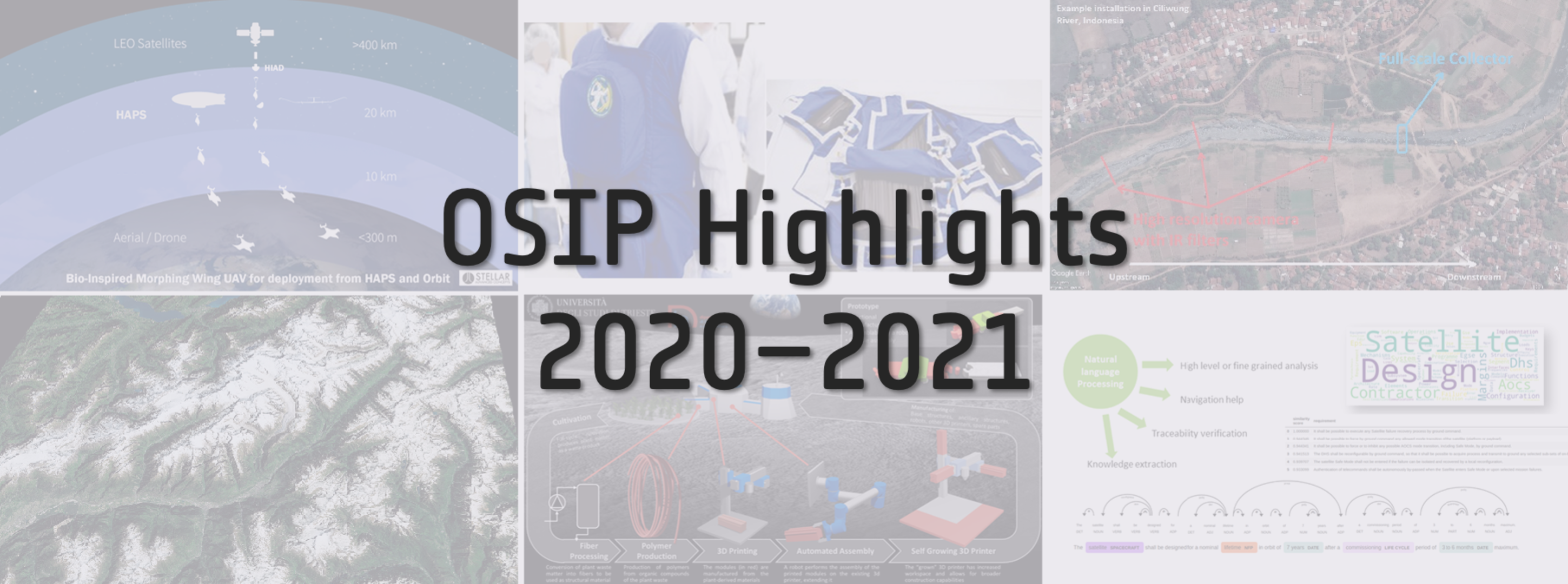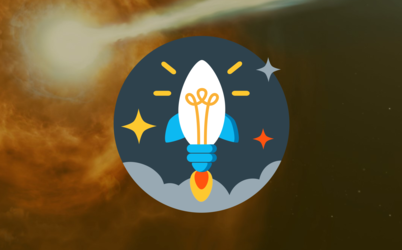Funding the future of European space through OSIP
What do high-tech sponges, aircraft shaped like falcons and 3D printers on the Moon have in common?
They can all be found among the topics of the 87 research and development activities funded by ESA's Discovery & Preparation programme between November 2020 and April 2021.
ESA set up the Open Space Innovation Platform (OSIP) to discover and invest in new unconventional ideas that could greatly benefit and advance European space industry and academia.
Here, the minds behind six of the projects funded between November and April tell us about their projects, motivations and goals, as well as the ways in which ESA Discovery funding is helping them take their activity to the next level.
Shapeshifting aircraft inspired by nature

Inspired by the high-speed dive of the peregrine falcon, a team from Stellar Advanced Concepts is creating a proof-of-concept unmanned aerial vehicle (UAV) with shape-shifting wings. Once released from a satellite in orbit or a high-altitude pseudo-satellite (HAPS), the UAV would descend to specific altitudes to carry out tasks such as observing natural disaster areas or carrying out search and rescue operations.
"Whether for controlled entry from orbit or returning reusable launchers, exploiting aerodynamic lift has great potential for expanding the range of applications of space vehicles," says ESA technical officer for the project, Johan Steelant.
"In the near term, the goal of the activity is to offer UAV products that can fold their wings like birds for controlled diving from high-altitude and when they land," says Mike Newsam of the Stellar Advanced Concepts team. "When combined with sensors and AI, this technology could enable UAVs designed to protect airports to quickly intercept and capture malicious drones like a peregrine falcon. In the long term, advanced morphing winglets for passenger aircraft could offer performance improvements and reduce emissions."
"Support from ESA has allowed us to pursue cutting-edge technology that is high risk, high reward from a business perspective," continues Newsam. "Feedback from ESA experts has also given us new application ideas to consider such as morphing winglets for reusable launch vehicles. We feel an ESA funded programme gives a strong credibility boost to early technology developments at start-ups and SMEs."
Easier access to Earth observation insights
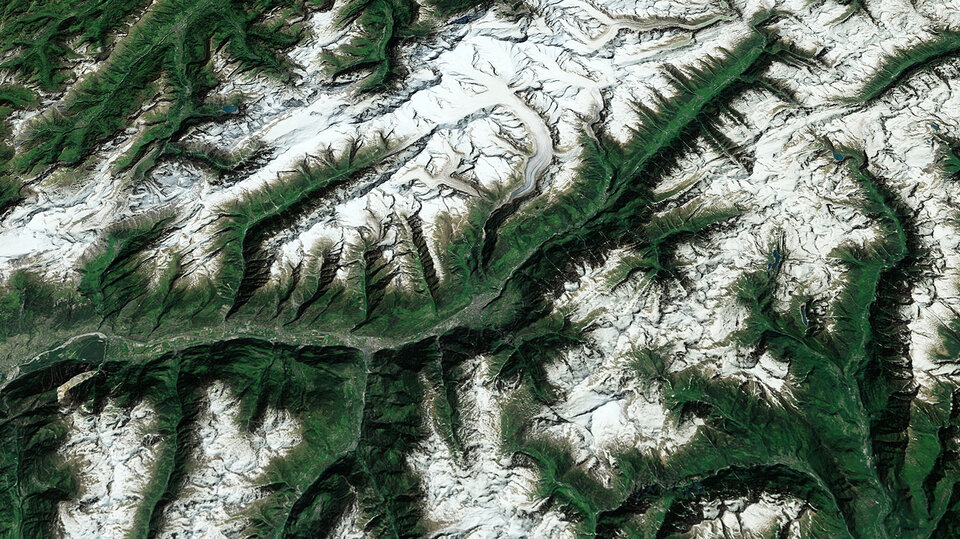
How much have glaciers moved in the last five years? Accessing and analysing the data necessary to answer this question would usually require advanced scientific and computational expertise. But what if you could get the answer by simply asking that exact question to a computer? That is the goal of a team at EPFL who are designing an AI assistant for interacting with Earth observation data.
"The project is exploring new ways for humans to interact with remote sensing data," says Devis Tuia, project leader at EPFL. "Our PhD candidate Christel Chappuis is developing a machine learning model that will allow non-experts to access the information contained in Earth observation data by simply asking questions as they would to another human. The model will make the connection between the natural language of the question and the relevant image data and analysis to provide useful answers."
"This type of co-funded research between ESA and leading universities and research centres in Europe accelerates the exchange of ideas," says Bertrand Le Saux, ESA technical officer. "This is especially helpful in leveraging the rapid progress of fields like natural language processing for space applications."
By making Earth observation insights easier to access, the project could expand the audience of potential entrepreneurs and policymakers, leading to the creation of new, unforeseen business ideas and increasing the impact of the data on the economy and society.
High-tech sponges for reliable radiation shielding
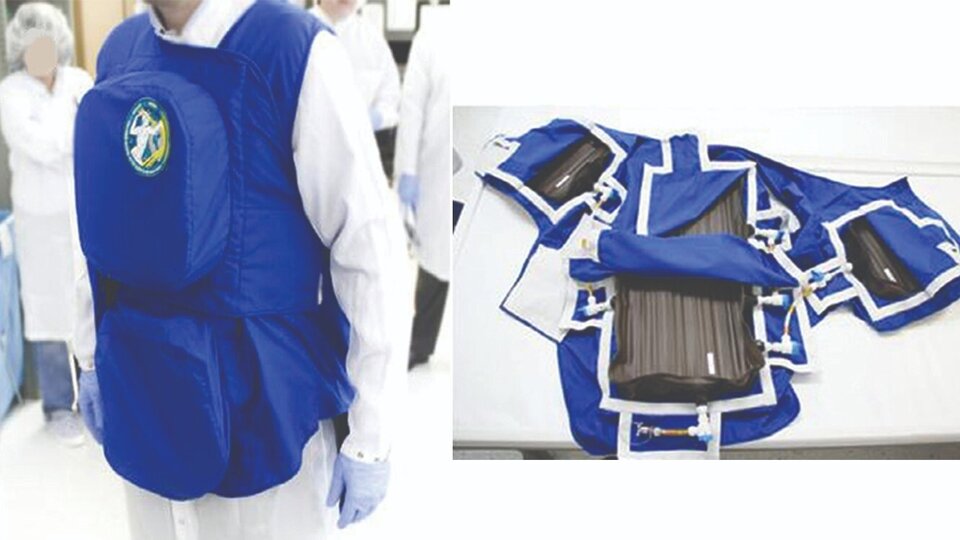
Astronauts are exposed to high levels of space radiation, especially when out on a spacewalk. Past ESA projects have developed spacesuits that use water to shield the most radiation-sensitive parts of the body, and these have been tested on board the International Space Station.
But using liquid water results in uneven and bulky containers with the potential to leak. A co-funded project led by Ghent University is addressing this by replacing the liquid with superabsorbent polymers that can instead absorb several hundred times their own weight in water. This should result in more resilient and comfortable personal radiation shielding for astronauts.
"ESA's increasing involvement in human exploration at the Moon and on to Mars has renewed the focus on one of the greatest challenges for human spaceflight – radiation," says Riccardo Rampini, ESA technical officer.
"The support from ESA Discovery is allowing us to tackle the challenges we've encountered in the project and to develop and test new materials together with experts at ESA," says Tom Gheysens, who leads the team at Ghent University. "If all goes well, we will be on the verge of a brand-new type of radiation-shielding spacesuit."
In addition to protecting the astronauts of space agencies such as ESA, reliable and comfortable radiation shielding will also be crucial for the emerging commercial space tourism industry.
A self-growing 3D printer for the Moon
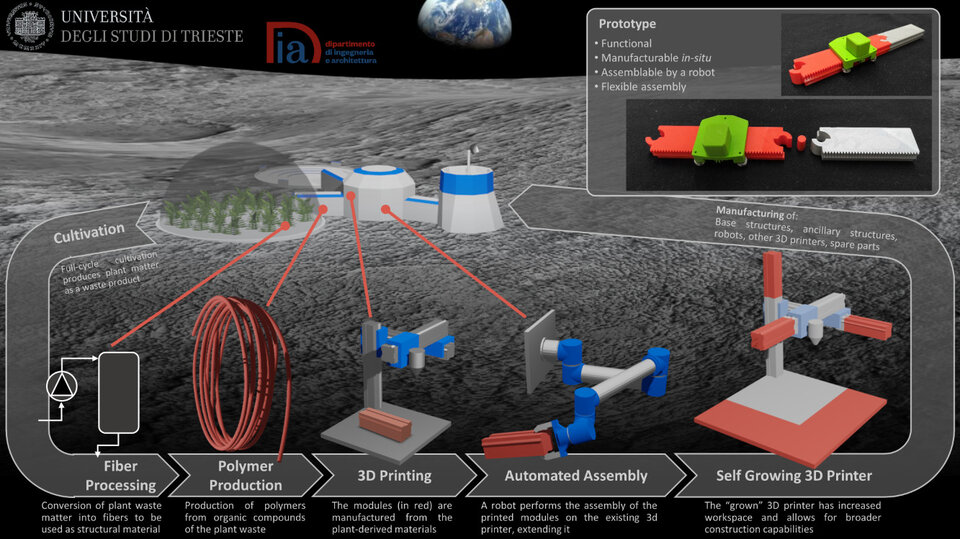
Plants are the factories of nature, transforming minerals and water into structural organic matter, such as fibres and cellulose. Could we harness these processes on the Moon? A research team from the University of Trieste is examining the feasibility of using vegetable fibres grown in situ on the Moon to produce the raw material for a 3D printer.
"Building a base for humans on the Moon or Mars will require resources for the construction of its structures and facilities. But these resources are heavy, bulky and thus very expensive to ship out of Earth's gravity," says Advenit Makaya, ESA technical officer for the project.
A small 3D printer transported to the lunar surface could then use this locally grown and harvested organic material to fabricate new complex and scalable modules that would then be attached to the printer by a robot – allowing the printer to 'grow' and expand its production capabilities.
"We at the University of Trieste believe that this meeting point between 3D printing and cultivation has the potential to be a key technology in the temporary or long-term settlement of the Moon. The funding and support from ESA have allowed us to explore the underlying features and issues of this paradigm; ultimately, it will enable us to overcome some of its core challenges, bringing the technology forward and closer to a realistic implementation plan."
Tracking plastic in Indonesian waterways
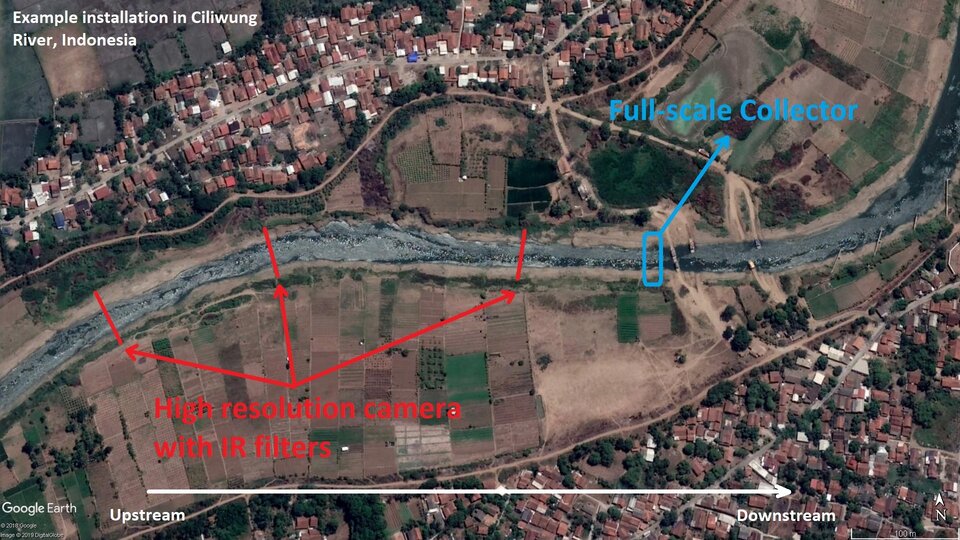
Rivers are a major source of the plastic pollution that enters the ocean. As plastic travels down rivers, it can aggregate to form larger patches that may be identifiable based on the way they reflect certain wavelengths of light.
A team from Deltares is investigating the possibility of detecting these plastic waste aggregations using remote sensing data collected by optical and microwave sensors on a range of European satellites.
"The ability to monitor plastic waste in rivers would support researchers modelling how plastic pollution flows from the land into the marine environment and help us evaluate the effectiveness of waste management policies," says ESA technical officer Paolo Corradi. "Together with the other projects of this ESA Discovery Campaign, the activity will help develop and improve plastic pollution detection techniques and technologies for current and future remote sensing missions."
"The support from ESA Discovery provides us access to the range of different satellite sensors we need in order to develop a multi-sensor monitoring method for detecting floating plastic waste," says Marieke Eleveld from Deltares. "By combining this satellite data with the data our team collects on site using a RiverRecycle plastic capture system, and advancing the relevant data science techniques, we hope to provide regional and national governments with much needed information for the design and evaluation of measures for reducing the plastic waste that reaches the ocean."
Spinning in AI to support space engineering activities

Much of the crucial information in engineering documents is still text-based, either because the return-on-investment of introducing models is too low or because the information is more efficiently expressed in natural language – even if that can lead to inconsistencies and inaccuracies.
A team from Thales Alenia Space is studying how AI-powered natural language processing can help space engineers reduce the cost and the lead time of their activities by improving how they navigate important textual content, providing links between and confirming the consistency of relevant documents, and facilitating the efficient reuse of knowledge.
"Everything from mission requirements to user manuals are text-based," says ESA technical officer Jean-Loup Terraillon. "So this activity will impact engineering activities throughout the life cycle of a space mission."
"Artificial intelligence will play a big role in the future of space engineering, greatly improving productivity, reducing costs and helping us manage the ever-increasing complexity of missions," says Gerald Garcia of Thales Alenia Space. "Our project has set out to answer the questions of 'how?' and 'when?'. As the European space community, we need to begin preparing right now to maintain our competitive advantage, and we are thankful to ESA's Discovery & Preparation programme for supporting us on this road!"
Discover more about ESA's Open Space Innovation Platform, including how you can submit your own ideas, via our dedicated webpage.


